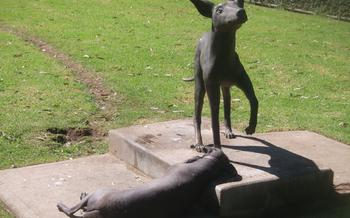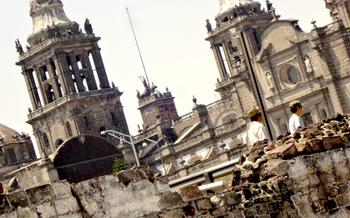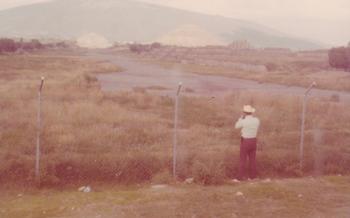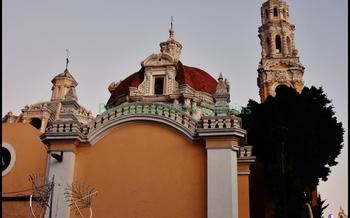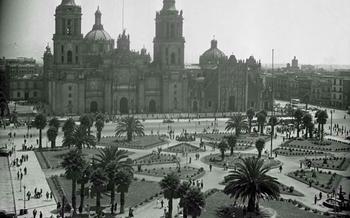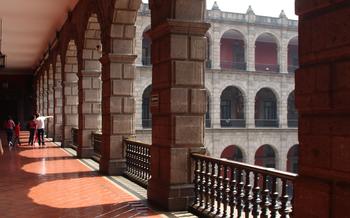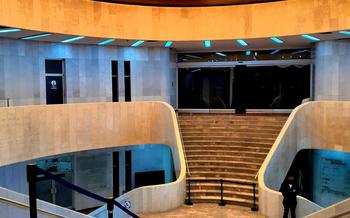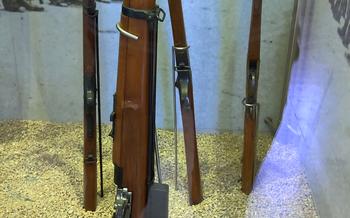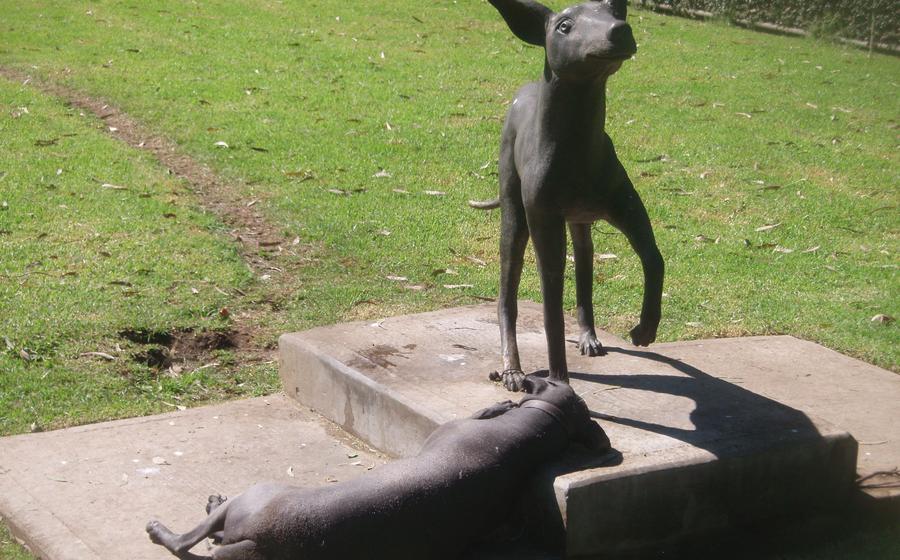
Dolores Olmedo Museum
- Dolores Olmedo Museum: An Oasis in Mexico City
- Location and Accessibility
- Hours of Operation and Admission Fees
- Permanent Collection and Featured Artists
- Diego Rivera Murals: A Must-See
- Frida Kahlo's Personal Belongings
- The Xochimilco Connection
- Educational Programs and Workshops
- Museum Shop and Souvenirs
- Tips for a Meaningful Visit
- Accessibility for Families with Children
- Language Considerations
- Surrounding Attractions and Points of Interest
- Insider Tip: Hidden Gems
Dolores Olmedo Museum: An Oasis in Mexico City
The Dolores Olmedo Museum, a cultural gem in the heart of Mexico City, was founded by the renowned Mexican actress and art collector Dolores Olmedo. Her passion for Mexican art and her close relationship with artists like Diego Rivera and Frida Kahlo led her to establish this museum in 1994 to showcase her extensive collection. The museum not only serves as a repository of Mexican art and culture but also offers a unique glimpse into the life and work of some of the country's most celebrated artists.
The architectural design of the museum is a testament to Mexican heritage, featuring a fusion of colonial and modern elements. The lush gardens surrounding the museum create an oasis-like atmosphere, providing a tranquil retreat from the bustling city. Recognized as a cultural institution of national significance, the Dolores Olmedo Museum is dedicated to promoting Mexican art, preserving the legacy of its most influential artists, and fostering a deeper appreciation for the country's rich cultural heritage.
Location and Accessibility
The Dolores Olmedo Museum is conveniently located in the La Noria neighborhood, just south of Mexico City's historic center. Its exact address is Avenida México 5843, La Noria, Xochimilco, 16030 Ciudad de México, CDMX.
Public transportation is an excellent option for reaching the museum. The closest metro station is La Noria, on Line 2 (blue line). From there, it's a short walk to the museum. Alternatively, you can take bus routes 110, 113, or 142, which all stop near the museum.
If you prefer to drive, there is limited street parking available in the surrounding area. However, it's important to note that parking can be challenging, especially during peak hours. Consider using a ride-sharing service or taxi if you have difficulty finding a parking spot.
The museum is wheelchair accessible, with ramps and elevators throughout the building. There are also accessible restrooms and designated parking spaces for visitors with disabilities.
Hours of Operation and Admission Fees
The Dolores Olmedo Museum welcomes visitors from Tuesday to Sunday, offering ample opportunities to explore its treasures. The museum's doors open at 10:00 AM and close at 6:00 PM, allowing for a leisurely visit during daylight hours. However, it's essential to note that the museum is closed on Mondays, so plan your visit accordingly.
General admission tickets for adults are priced at 80 pesos, providing access to the museum's permanent collection, temporary exhibitions, and the serene gardens. Children under the age of 12 and students with valid IDs can enjoy a discounted rate of 40 pesos. Additionally, seniors over 60 years old and military personnel with valid IDs are eligible for a 50% discount on admission tickets.
The museum recognizes the importance of making art accessible to all, offering free admission every Tuesday. This initiative allows visitors from all backgrounds to immerse themselves in Mexican art and culture without financial barriers. Take advantage of this opportunity to explore the museum's treasures at no cost.
For groups of 10 or more, special discounted rates are available upon reservation. Contact the museum's administration to inquire about group rates and make arrangements for a guided tour.
Permanent Collection and Featured Artists
The Dolores Olmedo Museum houses a remarkable permanent collection that showcases the essence of Mexican art and culture. The collection boasts an impressive array of works by renowned Mexican artists, including the legendary Diego Rivera, Frida Kahlo, and Angelina Beloff. These masters of modern Mexican art have left an indelible mark on the country's artistic landscape, and their creations continue to captivate audiences worldwide.
Among the highlights of the permanent collection is Rivera's iconic painting "The Flower Seller." This vibrant masterpiece depicts a young woman gracefully balancing a basket of vibrant blooms on her head, embodying the beauty and resilience of the Mexican spirit. Visitors can also marvel at Kahlo's poignant self-portraits, which offer a glimpse into her tumultuous personal life and artistic struggles. Beloff's enchanting landscapes, infused with surrealist elements, transport viewers to ethereal realms, showcasing the boundless creativity of these extraordinary artists.
In addition to these permanent fixtures, the museum frequently hosts temporary exhibitions and rotating displays, featuring works by contemporary Mexican artists and exploring diverse themes and artistic movements. These exhibitions provide a dynamic and ever-changing showcase of Mexico's vibrant contemporary art scene, ensuring that visitors always have something new to discover and appreciate.
Diego Rivera Murals: A Must-See
The Dolores Olmedo Museum is home to a collection of Diego Rivera murals that are considered among the most significant works of his career. These murals were created between 1953 and 1954 and depict scenes from Mexican history and culture. They are located in the museum's courtyard and are open to the public.
Rivera's murals at the Dolores Olmedo Museum are a must-see for anyone interested in Mexican art and history. They offer a unique perspective on Rivera's artistic development and his commitment to social justice. The murals are also a testament to the close relationship between Rivera and Dolores Olmedo, who was a major supporter of his work.
To fully appreciate Rivera's murals, it is helpful to take a guided tour or listen to an audio guide. These tours provide insights into the historical and cultural context of the murals and help visitors to understand the stories that Rivera is telling.
Here are some of the highlights of Rivera's murals at the Dolores Olmedo Museum:
- The Flower Seller: This mural depicts a young woman selling flowers in a traditional Mexican market. It is one of Rivera's most iconic works and is known for its vibrant colors and realistic style.
- The History of Mexico: This mural is a sweeping panorama of Mexican history, from the pre-Columbian era to the Mexican Revolution. It is one of Rivera's largest and most ambitious murals and is a testament to his mastery of the art form.
- The Dream of a Sunday Afternoon in the Alameda Central: This mural depicts a group of people walking through the Alameda Central park in Mexico City. It is a playful and whimsical work that is full of life and movement.
Frida Kahlo's Personal Belongings
Frida Kahlo's personal collection, displayed at the Dolores Olmedo Museum, offers an intimate glimpse into the life and work of this iconic Mexican artist. The collection includes a diverse array of artifacts that once belonged to Kahlo, such as clothing, jewelry, and furniture. These items provide valuable insights into her personal style, taste, and daily life.
Among the highlights of the collection is Kahlo's wardrobe, which showcases her unique fashion sense and love for vibrant colors. Visitors can admire her traditional Mexican dresses, embroidered blouses, and colorful shawls, which she often incorporated into her self-portraits. Her jewelry collection, featuring intricate pieces made of silver, gold, and semi-precious stones, reflects her appreciation for Mexican folk art and indigenous culture.
The museum also displays furniture and personal belongings from Kahlo's home, offering a glimpse into her domestic life. Visitors can see the bed where she slept, the table where she worked, and the easel where she created her masterpieces. These artifacts provide a sense of intimacy and allow visitors to connect with Kahlo on a more personal level.
By showcasing Frida Kahlo's personal belongings, the Dolores Olmedo Museum offers a unique opportunity to explore the artist's life beyond her paintings. These artifacts provide valuable insights into her personality, her artistic process, and her deep connection to Mexican culture.
The Xochimilco Connection
Dolores Olmedo shared a profound connection with the neighboring borough of Xochimilco, a UNESCO World Heritage Site renowned for its unique network of canals and chinampas, or floating gardens. In the early 20th century, Xochimilco was a popular destination for leisure and recreation, and Olmedo frequently visited the area with her family and friends. She was captivated by the beauty and tranquility of the canals, as well as the vibrant culture and traditions of the local community.
Olmedo's connection to Xochimilco extended beyond personal enjoyment. She recognized the importance of preserving and promoting the borough's unique heritage, and actively supported local initiatives aimed at protecting the environment and promoting sustainable tourism. Through her influence and generosity, she helped establish the Xochimilco Ecological Park, a vast natural reserve that safeguards the area's delicate ecosystem and provides a sanctuary for native wildlife.
Today, visitors to the Dolores Olmedo Museum can immerse themselves in the Xochimilco experience through a variety of offerings. Boat tours and traditional trajinera rides are available, allowing visitors to glide along the canals and admire the lush vegetation, colorful flowers, and historic landmarks that line the waterways. Cultural festivals and events are frequently held in Xochimilco, showcasing the borough's rich traditions, music, dance, and cuisine.
Educational Programs and Workshops
The Dolores Olmedo Museum offers a rich variety of educational programs and workshops designed to engage visitors of all ages in the vibrant world of Mexican art and culture. Children and adults alike can embark on a journey of artistic discovery through interactive classes, workshops, and lectures led by experienced educators and practicing artists.
For budding artists, the museum provides art classes and workshops that focus on various techniques and media, such as painting, drawing, sculpture, and printmaking. These classes offer a hands-on approach, allowing participants to explore their creativity and develop their skills under the guidance of professional instructors.
In addition to art classes, the museum also hosts regular workshops and lectures on a wide range of topics related to Mexican art and history. These programs delve into the lives and works of renowned Mexican artists, such as Diego Rivera, Frida Kahlo, and José Clemente Orozco, providing insights into their artistic processes, inspirations, and cultural contexts.
Educational programs at the Dolores Olmedo Museum are not only informative but also highly engaging, encouraging participants to think critically about art and its role in society. Reservations or registration may be required for certain programs, so it's advisable to check the museum's website or inquire at the information desk for details.
Whether you're a seasoned artist seeking to refine your skills or a curious learner eager to explore the depths of Mexican art, the Dolores Olmedo Museum offers a welcoming and stimulating environment for artistic growth and cultural enrichment.
Museum Shop and Souvenirs
The Dolores Olmedo Museum houses a well-stocked museum shop where visitors can purchase a variety of merchandise and souvenirs to remember their visit. The shop offers a unique selection of items inspired by the museum's collection, including replicas of Diego Rivera's and Frida Kahlo's artworks, traditional Mexican crafts, and souvenirs.
Visitors can find a range of items, from books and prints to postcards and other educational materials, that showcase the museum's commitment to promoting Mexican art and culture. The shop also supports local artisans and provides a platform for them to sell their unique creations, contributing to the preservation and promotion of Mexican craftsmanship.
Whether you're looking for a special gift, a souvenir to remind you of your time in Mexico City, or simply a way to support local artists, the Dolores Olmedo Museum shop is a great place to find something truly special and meaningful.
Tips for a Meaningful Visit
To make the most of your visit to the Dolores Olmedo Museum, plan to dedicate at least two to three hours to explore the permanent collection, temporary exhibitions, and Diego Rivera murals. The museum offers guided tours in Spanish and English, which provide valuable insights into the artworks and the life of Dolores Olmedo.
For a more immersive experience, consider visiting the museum on a weekday to avoid crowds and enjoy a tranquil ambiance. The weather in Mexico City can be unpredictable, so check the forecast and dress accordingly. While the museum is generally relaxed in terms of attire, it's advisable to maintain a respectful and modest dress code.
Photography is permitted within the museum, but using flash or tripods is not allowed. Respect the artwork and other visitors by keeping your voice down and refraining from touching or leaning on the exhibits. The museum offers a range of educational programs and workshops, so check the schedule and consider participating in one to deepen your understanding of Mexican art and culture.
Accessibility for Families with Children
The Dolores Olmedo Museum caters to families with children, ensuring a welcoming and engaging experience for all. Strollers and wheelchairs can easily navigate the museum's well-maintained pathways and galleries, allowing parents to comfortably explore with their little ones. Changing tables and nursing areas are conveniently located within the museum, providing a private and hygienic space for infants.
The museum also offers a range of family-friendly activities and programs designed to spark children's creativity and interest in art. Interactive workshops, storytelling sessions, and art classes tailored to different age groups are regularly organized, offering hands-on learning experiences that ignite young imaginations.
Discounts or family packages are available, making it affordable for families to enjoy a day out at the museum. By creating a supportive and inclusive environment, the Dolores Olmedo Museum encourages families to bond, learn, and appreciate Mexican art together.
Language Considerations
The primary language used for signage and audio guides at the Dolores Olmedo Museum is Spanish. However, the museum is committed to making its collection accessible to visitors from all over the world. Guided tours in English are available upon request, and visitors can also rent audio guides in various languages.
If you are a non-Spanish speaker, here are some tips to enhance your visit:
- Prepare beforehand: Familiarize yourself with some basic Spanish phrases related to art and museum terminology. This will help you navigate the museum more confidently.
- Utilize audio guides: Take advantage of the audio guides available in multiple languages. They provide detailed explanations of the artworks and the museum's history.
- Join a guided tour: Guided tours led by English-speaking docents are an excellent way to learn about the museum's highlights and ask questions.
- Interact with the staff: The museum staff is friendly and helpful. Don't hesitate to approach them if you have any questions or need assistance.
- Embrace the experience: Even if you don't speak Spanish fluently, immersing yourself in the museum's atmosphere and engaging with the artworks can be a rewarding experience.
Surrounding Attractions and Points of Interest
The Dolores Olmedo Museum is strategically located near several other cultural attractions and historical sites. Take advantage of your visit to explore the vibrant neighborhood and discover hidden gems. A short walk away is the Frida Kahlo Museum, a must-see for any art enthusiast. The museum showcases the renowned artist's personal belongings, artwork, and studio, providing an intimate glimpse into her life and creative process.
For a taste of traditional Mexican culture, stroll through the colorful Xochimilco Market, bursting with local produce, handicrafts, and traditional dishes. Take a break from the hustle and bustle with a relaxing boat ride along the iconic Xochimilco canals, passing through lush vegetation and floating gardens.
History buffs will appreciate the nearby Museo Nacional de Antropología, which houses an extensive collection of pre-Columbian artifacts and historical exhibits. The Museo del Templo Mayor, located in the heart of the city's historic center, offers an intriguing glimpse into the ancient Aztec civilization.
Plan a full day of exploration by combining your visit to the Dolores Olmedo Museum with these nearby attractions. Create your own itinerary based on your interests, whether it's art, history, or Mexican culture. The possibilities are endless!
Insider Tip: Hidden Gems
Beyond the main attractions, the Dolores Olmedo Museum holds a few hidden gems waiting to be discovered. In a secluded corner of the garden, find a serene spot known as "El Estanque de los Patos" (The Duck Pond). Here, you can sit by the tranquil waters and observe the resident ducks and turtles basking in the sun.
For art enthusiasts, take a closer look at the museum's collection of pre-Hispanic artifacts. While not as well-known as the modern art pieces, these ancient sculptures and pottery offer a glimpse into Mexico's rich cultural heritage.
Don't miss the opportunity to visit the museum's library, which houses an impressive collection of books and documents related to Mexican art and history. Whether you're a researcher or simply curious to learn more, you'll find a wealth of information here.
By exploring these hidden gems, you'll gain a deeper appreciation for the diverse offerings of the Dolores Olmedo Museum and create lasting memories of your visit.
